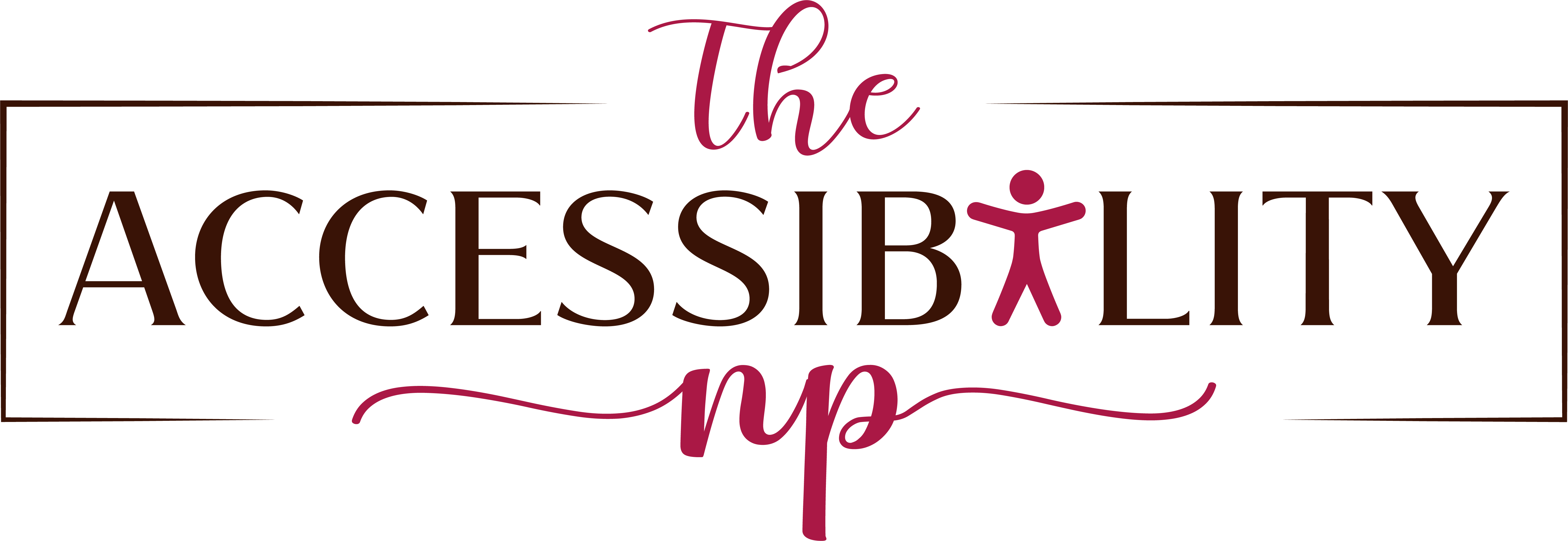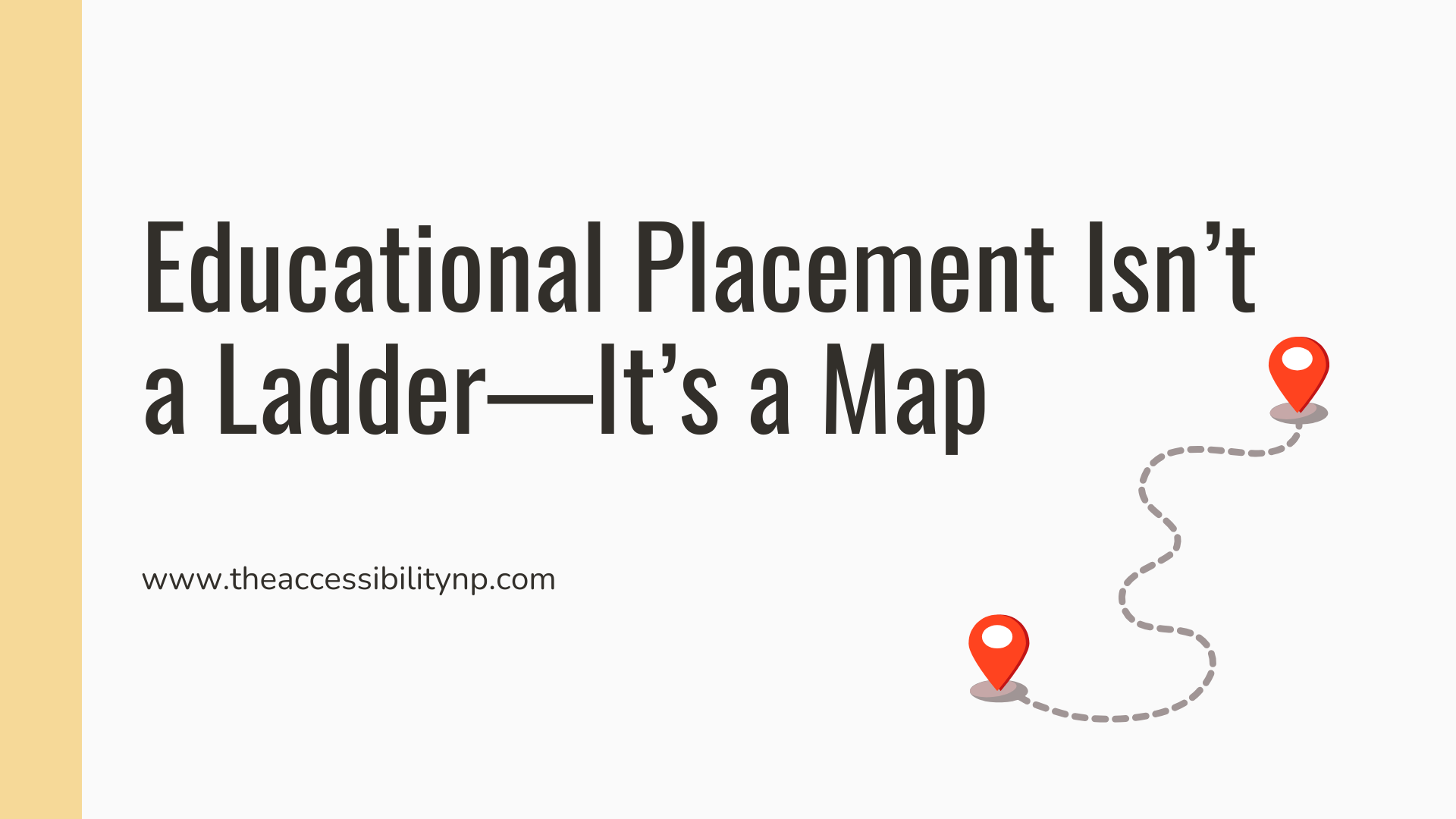When we talk about educational placements, there’s a quiet but persistent pressure that many families and educators feel—like we’re all supposed to be climbing some invisible ladder. The “goal,” it seems, is to get every student into general education full-time, with as few supports as possible.
But here’s the truth: placement isn’t a race. It’s not about reaching the “top.” Educational placement is about access. It’s about what a student needs right now in order to learn, grow, and feel connected. And that’s going to look different for every child.
This isn’t failure. It’s individualized education—exactly what the law promises and what our kids deserve.
Why Placement Conversations Feel So Heavy
For many families—especially families of disabled students—placement conversations are emotional. They bring up fear, hope, grief, pride, and sometimes exhaustion. You sit in the IEP meeting hoping that this year will be different. That your child will be understood, supported, and seen. And often, placement becomes the focus of that hope.
But here’s where we need to shift the conversation.
Placement isn’t the starting point. It’s the outcome of a much bigger process. It comes after the IEP team looks at the student’s strengths, needs, goals, and services. And it should reflect where that student will have the most access to learning—with the right tools and supports in place.
What Is Placement Really About?
Educational placement refers to the setting where a student receives their special education services. Legally, schools are required to provide services in the least restrictive environment (LRE), meaning students should be educated with their non-disabled peers to the maximum extent appropriate.
But “least restrictive” doesn’t always mean general education is automatically best. It means we look at how much access the student has to learning, peers, and participation—and which setting will support that.
There are a range of placement options under IDEA, including:
-
General education with or without supports
-
Resource rooms (pull-out support)
-
Self-contained classrooms
-
Separate day schools
-
Residential programs
-
Homebound or hospital instruction
-
Transitional/hybrid models
Each of these has a purpose. None of them are inherently better or worse. They’re just different tools for different needs.
Access Over Placement
Let’s stop thinking of placement as a measure of success. Instead, let’s ask better questions:
-
Where can this student access grade-level content meaningfully?
-
What supports are needed to help them participate in daily routines?
-
Is the student using (or being denied) tools that would make inclusion possible?
-
Does this setting honor the student’s communication, regulation, and accessibility needs?
Sometimes, a student thrives in a general education setting with AT supports like speech-to-text, alternative keyboards, or AAC. Other times, a self-contained classroom with visual schedules, sensory supports, and a strong assistive technology plan offers the consistency and structure they need.
And sometimes, a student needs a temporary shift in placement—like homebound instruction or a separate therapeutic day school—to stabilize before returning to a more inclusive setting.
None of those options are wrong. What’s wrong is pretending one of them is always right.
Where Does Assistive Technology Fit In?
Assistive Technology (AT) should never be an afterthought when talking about placement. In fact, it often holds the key to expanding placement options.
Too often, I’ve seen students placed in more restrictive settings because teams assumed they couldn’t participate in general education without giving them the tools to try.
Let me say that again: placement should not be decided before AT is considered.
Here are just a few ways AT can shift what’s possible:
-
A student with dyslexia uses text-to-speech and can now access grade-level reading without relying on someone to read aloud.
-
A non-speaking student is introduced to a robust AAC device and can participate in class discussions, answer questions, and advocate for themselves.
-
A student with executive functioning challenges uses visual schedules and time management apps to stay on track with assignments.
-
A student with physical disabilities uses adapted access tools like switches or eye gaze to fully engage with the classroom environment.
When AT is used intentionally, it breaks down barriers—not just to curriculum, but to placement. It creates options.
Placement Is Fluid, Not Final
One of the most overlooked truths about educational placement is that it’s not permanent. It can and should be revisited as a student’s needs change.
Maybe a student starts in a separate day program to stabilize behavior and work on communication, but after a year of progress, they’re ready to rejoin their neighborhood school. Maybe a student who was struggling in general education moves to a hybrid model for part of the day and finds renewed confidence. Maybe a medically fragile student receives homebound services for a season and then transitions back into the classroom with accommodations and AT in place.
Placement is a snapshot in time. It’s not a judgment. It’s not a ceiling.
Our job is to stay curious, flexible, and open to what a student needs next—not just what they needed before.
Navigating Placement Conversations as a Parent or Educator
Whether you’re walking into an IEP meeting as a parent, teacher, administrator, or advocate, here are a few reminders:
-
Bring the focus back to the student’s right to access. Ask: What setting will give them the greatest access with appropriate support?
-
Don’t assume a student “can’t” until tools and strategies—especially AT—have been tried. AT trials are often skipped and shouldn’t be.
-
Understand that placement is just one piece of the IEP. It must align with the student’s goals, services, and accommodations.
-
Be cautious of language like “earn their way back” into general ed. Placement is not a reward system—it’s a support plan.
-
Remember that parent voice matters. Families are equal members of the IEP team and bring vital insight into what works best for their child.
And always, always remember: different doesn’t mean less.
Placement Should Reflect Dignity, Access, and Belonging
We talk a lot about inclusion, and we should—but inclusion isn’t only about physical proximity. It’s about meaningful participation. A student who sits in the back of the classroom without access to the curriculum or the ability to communicate their thoughts is not included—they’re just present.
True inclusion means that a student is supported in a way that affirms their identity, meets their learning needs, and values their presence. Sometimes that means being in general ed with supports. Other times, it means being in a smaller environment where supports are embedded all day long.
What matters most is that the student feels seen, supported, and understood.
That’s what placement should reflect—not a ladder to climb, but a map to guide the way.
Final Thoughts
Placement isn’t about comparison. It’s not about what another student with the same diagnosis is doing. It’s not about checking boxes or aiming for what sounds the most “inclusive” on paper.
It’s about the individual student. Their voice. Their needs. Their access.
And when we look at placement through that lens—access first, always—we stop forcing students into systems that weren’t built for them. We start building systems around the student.
Every child deserves a placement that works for them, not one that asks them to work harder just to survive it.
There’s no top of the ladder. There’s only the path forward—and we find it by asking the right questions, using the right tools, and always choosing dignity over default.
Because every student deserves access.
Every student deserves options.
Every student deserves a map—not a mold.

